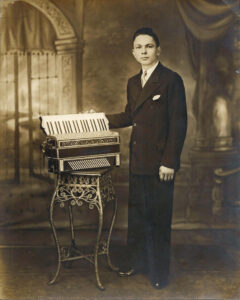The Cue That Became a Legend: George Balabushka and The Color of Money
In a modest garage in New York during the late 1950s, the sound of a lathe echoed quietly as a former cabinetmaker turned craftsman began shaping what would become one of the most revered names in cue-making history. George Balabushka, a Russian immigrant with an artisan’s hands and a pool player’s heart, never set out to become a legend—he simply set out to build better cues.

What began as a hobby quickly evolved into an obsession. Balabushka’s background in woodworking allowed him to innovate at a time when cue design was largely utilitarian. He chose straight-grained maple for its integrity, introduced unique ring designs and inlays, and obsessively refined balance and performance. Each of his cues was handcrafted—never mass-produced—and George never signed a single one. Yet by the time of his passing in 1975, word of his workmanship had spread through the billiards community like wildfire. His cues weren’t just tools; they were instruments of precision and elegance.
A Cue’s Second Life in Cinema
More than a decade after George’s death, Hollywood unknowingly catapulted his name into pop culture legend.
In 1986, _The Color of Money_—Martin Scorsese’s gritty sequel to _The Hustler_—hit theaters, starring Paul Newman and Tom Cruise. In one now-famous scene, Cruise’s character Vince introduces a cue in a sleek case and reverently tells his opponent:
“It’s a Balabushka.”
The cue shown in the film wasn’t actually made by George Balabushka—most likely a custom or replica used for shooting purposes—but the name-drop was real. To insiders of the sport, it was an acknowledgment of George’s place at the pinnacle of cue-making. To the rest of the world, it was an introduction to a name that would come to symbolize excellence.
That single line of dialogue became a cinematic endorsement. Viewers began asking, “What’s a Balabushka?” Collectors and players already knew—and now, the broader public did too. Demand for authentic Balabushka cues soared, as did the myth surrounding them.

Legacy Cemented in Culture
Although George never lived to see his name uttered on the big screen, the movie played a crucial role in preserving and elevating his legacy. His cues, already prized among players for their superior feel and rare craftsmanship, took on near-mystical status. They became collector’s items, often fetching tens of thousands of dollars at auction.
But beyond the dollar value, Balabushka cues became part of the sport’s mythology—representing not just function, but form, feel, and soul. They stood for something: the pursuit of perfection, the artistry of balance, and the legacy of one man’s hands in a fast-paced world of cues and hustles.
A Legacy That Lives On
Today, the Balabushka name continues to represent the gold standard in cue-making. Licensed reproductions honor George’s original designs, and collectors still chase down authenticated originals with reverence. And thanks to The Color of Money, a new generation discovered not just a film—but a craftsman whose work transcended the sport.
George Balabushka never sought fame. He simply wanted to build the perfect cue. But through dedication, mastery, and one iconic line in a Hollywood film, his name became immortal.

